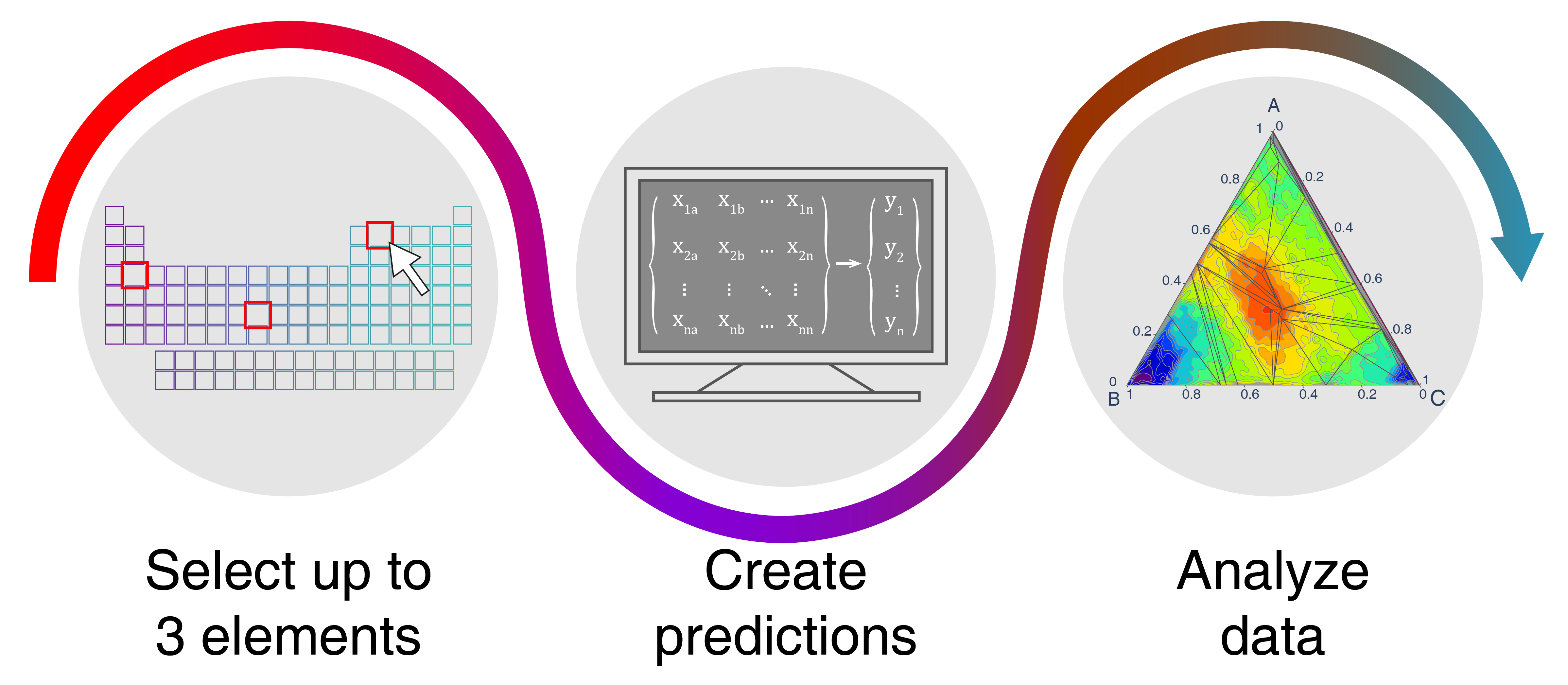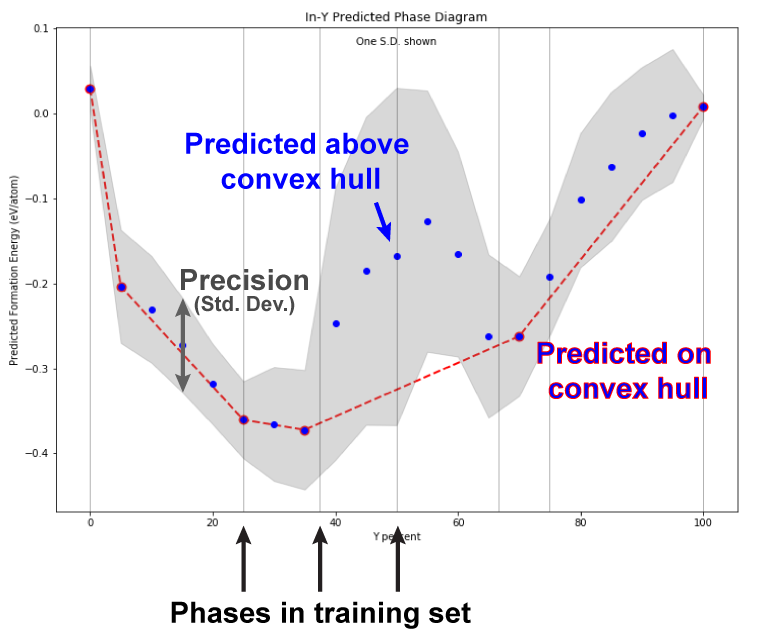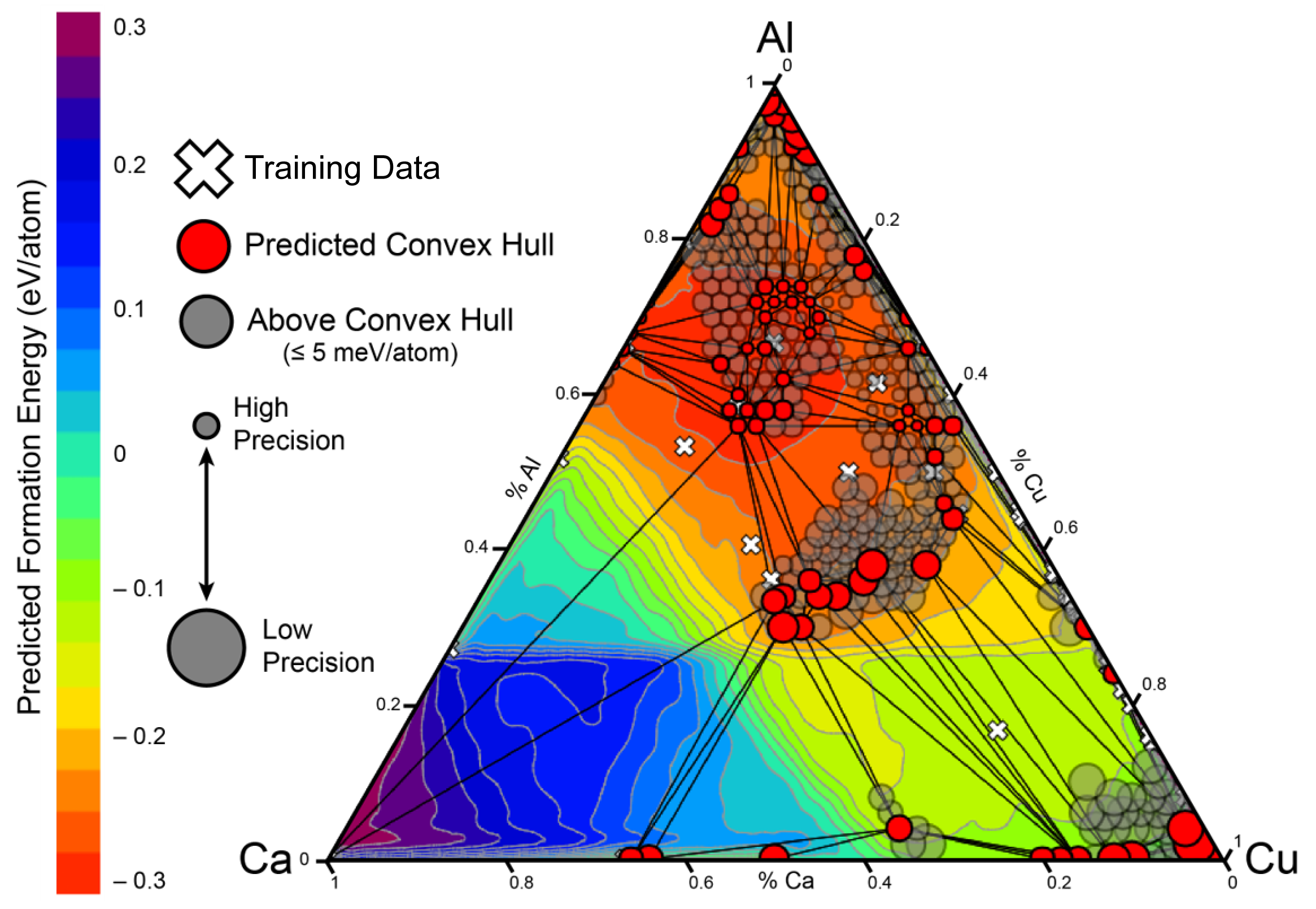About MatLearn
MatLearn is a web-based machine learning model and visualization package for quickly exploring materials properties across compositional space. MatLearn is designed to guide solid-state synthetic efforts towards regions of a phase diagram that are predicted by the model to be more likely to yield compounds that are stable or have a desirable property.
The development of MatLearn is described in detail in publication info

How to use MatLearn
Select any combination of elements (binary or ternary) from the home page and define a composition range (step size). Select “Create Predictions” and MatLearn will produce a predicted binary or ternary phase diagram for the system.
For binary systems, the average MatLearn prediction is plotted as a blue dot, with a shaded gray area indicating the precision of each prediction through the standard deviation. Points on the convex hull are highlighted in red, and a red dashed line connects points on the hull. Finally, compounds included in the MatLearn training data are included as drawn as vertical lines

Binary Systems
For binary systems, the average MatLearn prediction is plotted as a blue dot, with a shaded gray area indicating the precision of each prediction through the standard deviation. Points on the convex hull are highlighted in red, and a red dashed line connects points on the hull. Finally, compounds included in the MatLearn training data are included as drawn as vertical lines

Ternary Systems
For ternary systems, a ternary phase diagram is drawn where each element corresponds to one corner, and a triangular heatmap shows the predicted formation energy value (blue for higher formation energy and therefore less likely to be observed and red for lower formation energy and more likely to be observed). Compositions predicted on the convex hull are drawn as red dots connected by tie lines, and points just above the convex hull (50 meV/atom above the hull by default) are drawn as gray dots. The size of each dot corresponds to the standard deviation of each prediction for each composition from the model, with larger dots corresponding to less precise predictions and smaller dots indicating higher precision. Finally, compounds in the MatLearn training data set are drawn as white “X”s.

The Brgoch Group
The Brgoch research group run by Prof. Jakoah Brgoch at the University of Houston is focused on combining experimental and data-driven investigations to develop functional inorganic materials. Learn more about the Brgoch group at www.brgochchemistry.com.
